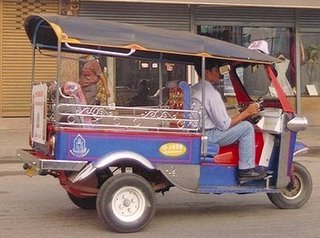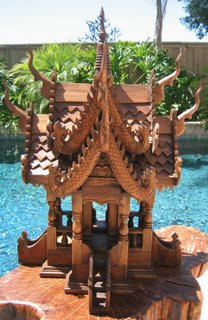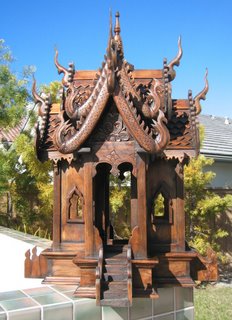
Embarking on the Journey
Menopause is one of the most significant occurrences in a woman’s life. It heralds an extremely individual and unique transition. Women are different, and they will experience changes in different ways. The only similarity for all of us is that we are approaching a crossroads, a major turning point, and a defining moment in our lives.
The menopausal years of a woman's life can be frustrating as dramatic swings alter her physical being, and challenge the way she has been viewed previously, both by herself, and by those around her. This process, which culminates in menopause, occurs over time. “Like all states of being, a woman comes upon menopause gradually, as she did to other stages of her life. Today we sometimes have a tendency to rush through our lives noting punctuated events only”, explains Christiane Northrup, author of “The Wisdom of Menopause”
A Storm from Within
As women approach menopause, or ‘the big M’ as some call it, there is a sense of accomplishment as well as a feeling of dread. Menopause is not just a physical event; it also brings deep psychological transformation. Heat flushes feel bizarre because they come unannounced, they resemble lightening in a storm, and feel like an internal boom of energy right at the core of one’s being. As heat flows emotions are liberated, the spirit is engaged; hot flushes are radiating from within and allowing women to express who they really are. Warmth rushes in waves, steaming the face, shoulders, and chest for a few seconds at a time, subsiding and retreating again without warning. At times you’ll feel pressed to write your feelings on a journal, or doing nothing at all, let the memories sweep through you. There’s a resurrection of sorts emerging from within pleading to be acknowledged. Learn to rejoice in those heat interventions and learn to decipher their meaning.
Joining the Crowd
For some women menopause means independence. Others feel emotionally and spiritually resurrected, and wise. Unconcerned about pregnancy and the absence of monthly periods, many experience a sense of freedom and well-being. Nonetheless, menopause is also seen with anxiety and trepidation by some. Many women fear leaving their fertility behind, and growing older. The child-bearing years are over; the very reason for womanhood about to be extinguished. Great hormonal imbalance at this time accounts for the roller coaster ride of brittle emotions.There’s much to learn about menopause. Women all over the world are getting together and talking about it. They are setting-up chat rooms on the internet, and forming ‘menopause tea groups’. This is not a hushed subject anymore. It is a reality, not a myth. Educated women want to know what is going on in their bodies and their minds at this special time in their lives.
What is Menopause?
Meno (menstruation) pause (stop); technically it is the last menstrual period of a woman’s life. In a few words this means that the ovaries gradually cease to release eggs and women stop menstruating. It rarely happens that easily though. Menopause, again, is a gradual progression that begins taking form as early as the mid thirties or early forties for some women; it is a slow, steady climb up the stairs of maturity.
The Menopausal Years
In her book, The Menopausal Years, the Wise Woman’s Way, author Susun (yes, Susun) Weed discusses the transformation from young womanhood to wise, older female. She talks about the menstrual cycle’s final years as well as the ancient and unique events of menstruation and ensuing menopause.This transformation is divided into three stages: before, during, and after menopause; each stage presenting different challenges and needs.
First Signs of Menopause
This is a time marked by gradual changes affecting a woman’s feelings, bodily functions, and hormonal composition. This phase is called the climacteric or the transition from the –reproductive to the non-reproductive- years of her life. During these pre-menopausal years, menstrual periods will become clearly different in nature, perhaps heavier or slighter, longer in duration, or further apart. At this time the pre-menopausal woman may start experiencing occasional episodes of hot flushes (flashes) and sweating at night. Women generally attribute this to anything but menopause. I think we are usually NOT ready to accept that this is the beginning of the change, of our arrival at a certain maturity in our lives.
Before menopause the ovaries start slowing down their production of the female hormone estrogen. As levels of estrogen vary, body systems such as the adrenal, thyroid, and pituitary glands amongst others; also fluctuate causing emotional, physical and psychological imbalances.
Feed your Body and your Soul
Eating soy and calcium rich foods is one of the most important things the pre-menopausal woman can do. Calcium protects bones from loosing their density, from emotional mood swings and from heart disease. Soya beans are mostly protein; they have no fats, and are high in fiber. Soy products aid your heart, your bones and your arteries. Research shows that soy products may protect from diseases such as breast, and uterine cancers.Calcium rich foods include: low-fat dairy products, long, green leafy vegetables such as kale, collard greens, Chinese cabbage and broccoli.Soy milk comes in many flavors and tofu can be added to salads and prepared foods.
The Progression Towards Menopause
This period includes on average, the year or two before reaching the complete cessation of menstrual periods as well as the year or two after it. The average age during this transition is 51 years. Hot flushes, and night sweats may be frequent; stop altogether and then come back; palpitations, emotional sensitivity, and sleeplessness are common. Other important signs are mood changes, headaches, frequent urination, achy joints and changes in sexual desire. Most of these conditions are also frequently linked with PMS (pre menstrual syndrome).The occasional woman exists who will have one last menstrual period with no trouble before, or after. Some people are lucky; but not most of us, unfortunately. Take time for solitude and quiet inner reflection. As women’s reproductive years come to an end, many close the chapter on their regular care-taking duties. Hot flushes, exhaustion, and moodiness place us in a world of our own. It’s appropriate to contemplate and re-think your motives. There are special herbal teas to help those with unrelenting menopausal symptoms. Take time to write in a journal; keep it nearby to be able to record your ideas. Your impressions and feelings tend to be more acute during this time. Now is your chance to begin anew, do some things you wanted to but could not do, perhaps because of social opposition, lack of money or time. During this stage, and without the stress of managing children’s schedules, you’ll have time to listen and care for your own body and self. Reward yourself! This is your moment in time; you have come out of the final shell.
After it's gone
Once your menstrual periods fail to show-up for twelve full moons, it is safe tobelieve that you are a post-menopausal woman. These are the ‘after’ years. The same symptoms as before and during may still be present, weakening the quality and quantity of the post menopausal years. Build a healthy, strong heart and blood system.Eat a healthy diet: full of vegetables, fruits, and grains instead of meats and animal products. Your bones and your heart will benefit.
MOVE! Walk, stretch, stay active. Be alive! Walking and weight bearing exercise will keep you fit while protecting bones and heart. Anthropologist Margaret Mead once said: "There is no more creative force in the world than the menopausal woman with zest”. ‘Middle Age’ brings wisdom, self-confidence, andunderstanding.
Transformation
Menopause is not a motionless event, it would be wrong to think of it in this manner. It’s not one specific thing or another. It’s a combination of erratic signs in the ample spectrum of a woman’s structural make-up indicating a transformation is about to happen. Fruits and vegetables don’t just ripen and fall off, do they? Babies are not created in a day. As nature moves forward, women begin to experience diminutive changes at first, gigantic ones later on announcing the final stage called menopause.

 entury, when Chinese and Japanese mass-produced silks hit the marketplace, the rather small Thai silk cottage industry declined profoundly.
entury, when Chinese and Japanese mass-produced silks hit the marketplace, the rather small Thai silk cottage industry declined profoundly. ave become legendary and romanticized all over Thailand. The resurrection of the silk industry; the enterprising, heirless business corporation left behind, plus an affluent traditional teak home -- now a museum of priceless Southeast Asian arts -- the Jim Thompson spirit lives on. The Thai Silk Company Ltd. has branch stores all over Southeast Asia as well as Europe and the USA.
ave become legendary and romanticized all over Thailand. The resurrection of the silk industry; the enterprising, heirless business corporation left behind, plus an affluent traditional teak home -- now a museum of priceless Southeast Asian arts -- the Jim Thompson spirit lives on. The Thai Silk Company Ltd. has branch stores all over Southeast Asia as well as Europe and the USA.
 Early last year we visited some of the mountainous hill-tribe areas of northern Thailand; the chilly, dry weather was a welcome blessing after living in tropical Bangkok for several months.
The various ethnic minorities scattered along the hills intrigued me, for they have preserved their own language, spiritual beliefs, distinct culture, and colorful style of dress.
Early last year we visited some of the mountainous hill-tribe areas of northern Thailand; the chilly, dry weather was a welcome blessing after living in tropical Bangkok for several months.
The various ethnic minorities scattered along the hills intrigued me, for they have preserved their own language, spiritual beliefs, distinct culture, and colorful style of dress.

































